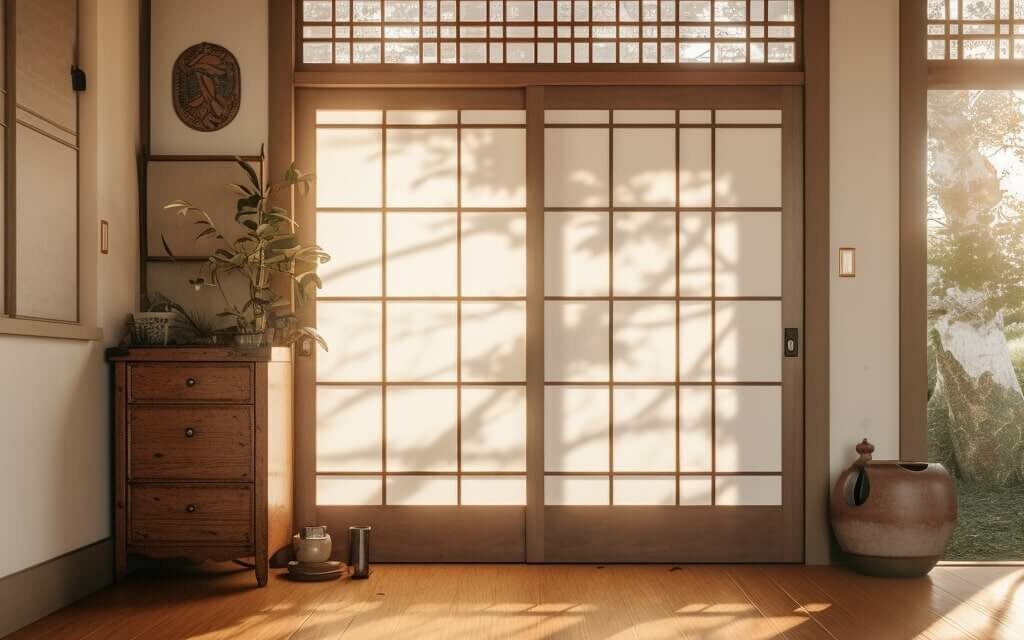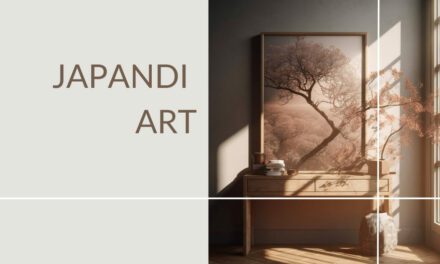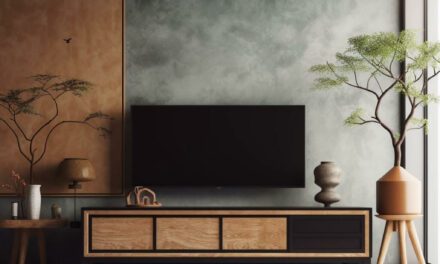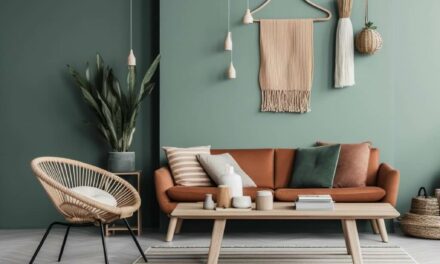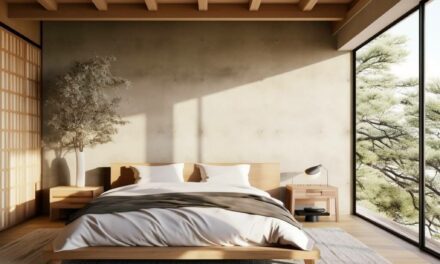As an avid interior design enthusiast, I’ve always been drawn to minimalist aesthetics that blend functionality with tranquility.
My quest for the perfect balance led me to the Japandi style – a harmonious fusion of Japanese simplicity and Scandinavian practicality.
I’ve found it particularly transformative when applied to entryways, those first impressions of our homes.
In this guide, I’m thrilled to share my insights on how you can create a Japandi entryway that speaks volumes about your unique taste while offering a warm, inviting entrance to your living space.
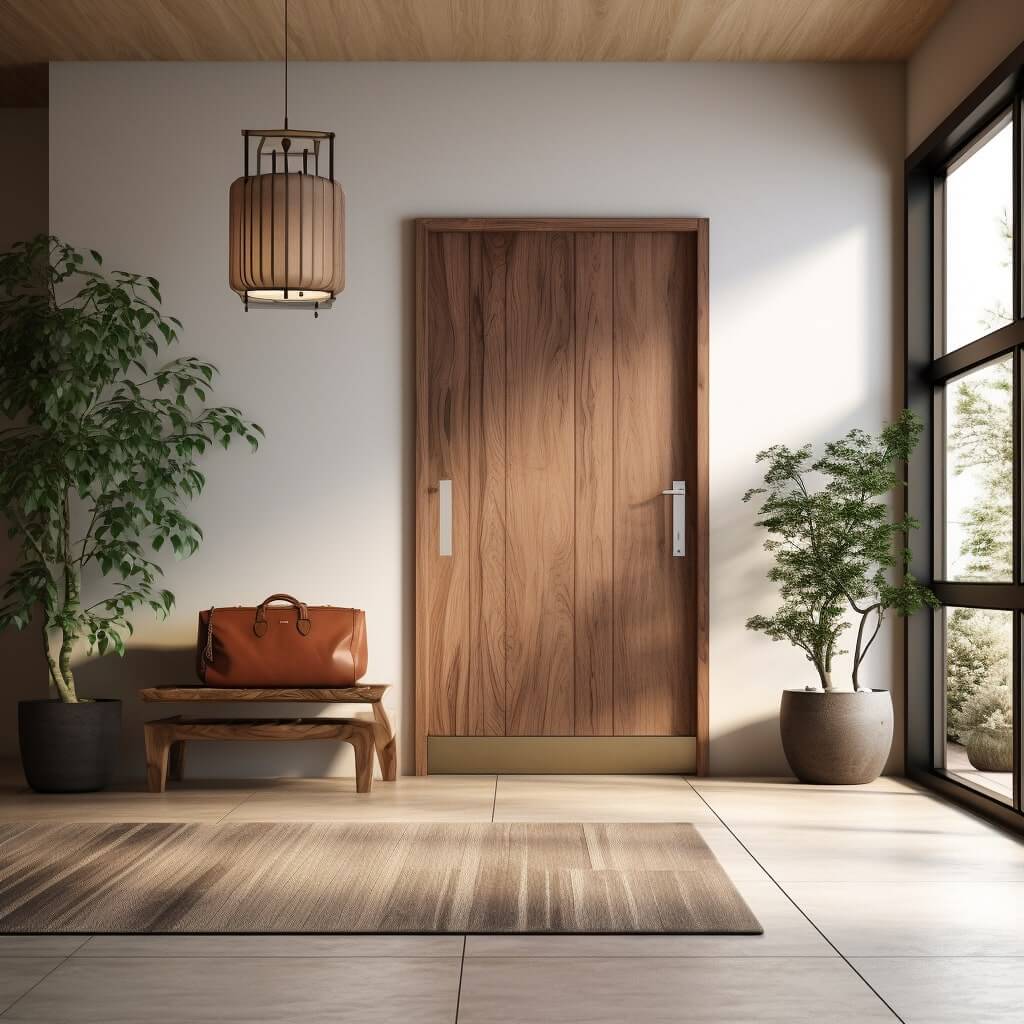
What is Japandi Style?
Japandi is a design philosophy that captures the best of two worlds: the delicate minimalism of Japanese design and the cozy functionality of Scandinavian decor.
As someone who has long admired both aesthetics, the Japandi style has a particular appeal.
It’s a balanced, understated approach to home decor that effortlessly brings together the East and West.
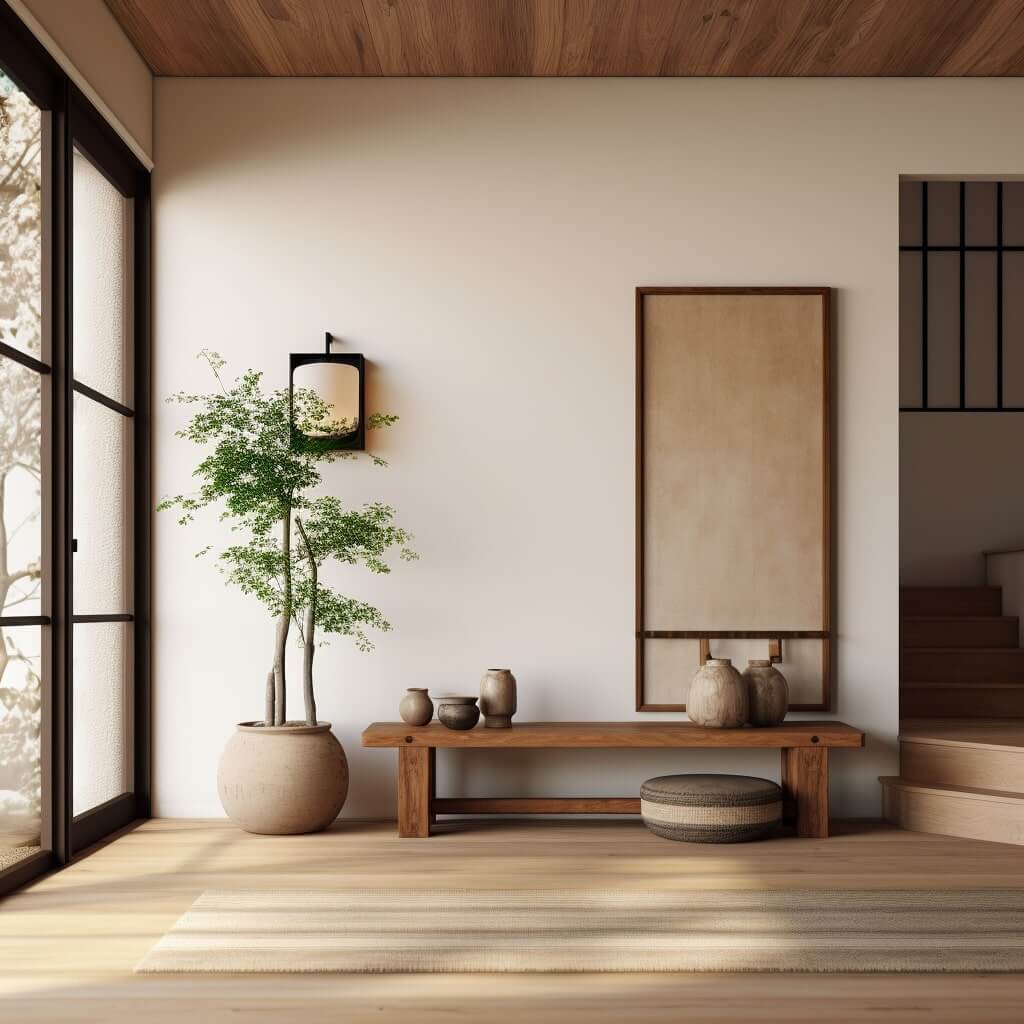
The Fusion of Japanese and Scandinavian Design
Japanese design, known for its Zen-like simplicity and reverence for natural beauty, meets the warm, functional approach of Scandinavian design in the Japandi style.
From my experience, it’s all about merging the clean lines and natural materials characteristic of these two design philosophies.
The result is an atmosphere that exudes calm and serenity, but also radiates warmth and homeliness.
In Japandi, the light, airy ambiance of Scandinavian design gets an added layer of depth from the Japanese wabi-sabi concept, which celebrates the beauty of imperfections.
Each piece of furniture, decor item, or artwork is thoughtfully selected and placed, with a focus on quality and purpose, rather than quantity.
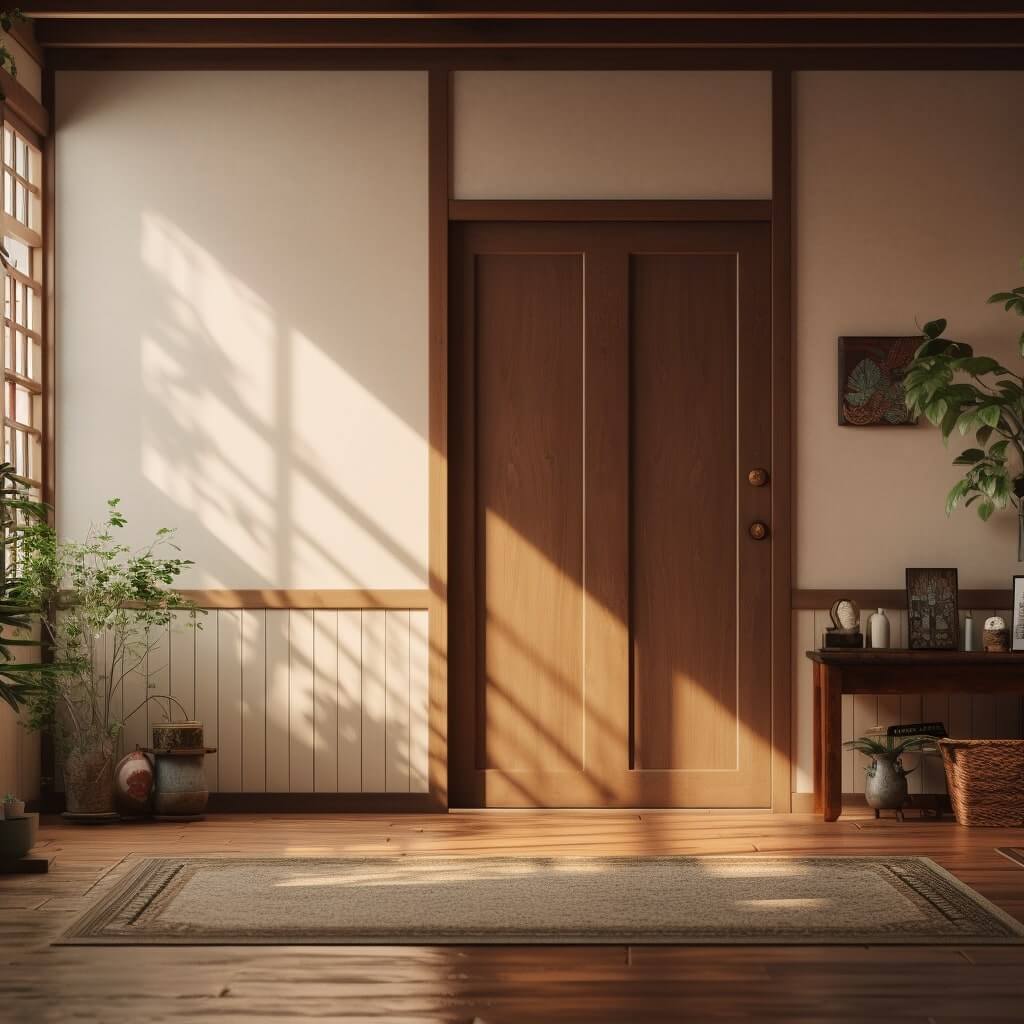
My 10 Favorite Japandi Sideboards
Here are 10 of my favorite sideboards for Japandi entryways, which I think are an important cornerstone for creating the style, as you’ll see them featured in most of my examples.
1, Handmade Japanese Style Black Walnut Sideboard

2. Fluted Oak mopio Ensley Sideboard

3. POVISON Solid Walnut Sideboard

4. mopio Golden Oak Sleek Sideboard

5. Nathan James Liam Oak Sideboard

6. kevinplus Walnut Sideboard

7. Nathan James Logan Modern Rattan Sideboard

8. Low Profile Fluted Oak Sideboard

9. mopio Haylee Natural Oak & Rattan Sideboard

10. Finnhomy Sideboard With Hand Made Rattan Decorated Doors

Key Elements of Japandi Design
The key elements of Japandi design lie in its simplicity, functionality, and respect for nature.
In my own home, I’ve embraced neutral color palettes, natural materials like wood and stone, and furnishings that balance utility with aesthetic appeal.
Every object has a place and purpose, decluttering the space both physically and visually.
Artisanal, handmade items are another cornerstone of Japandi design, as they contribute a sense of authenticity and uniqueness.
And don’t forget plants – they play a crucial role in breathing life and freshness into the space, echoing the Japanese appreciation for nature.
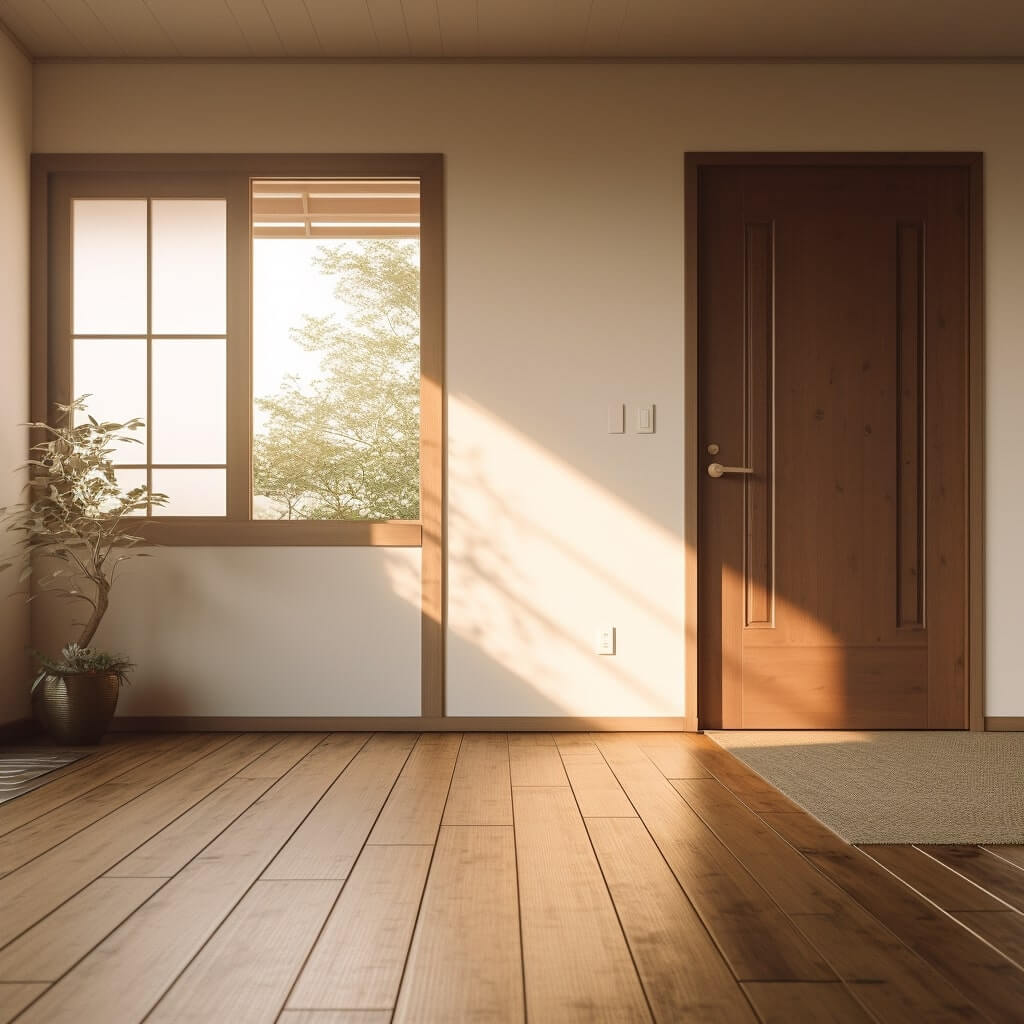
Why Japandi Style is Perfect for Entryways
Entryways, in my view, are an ideal place to incorporate Japandi style.
The blend of functionality and simplicity creates a welcoming, peaceful atmosphere from the moment you step through the door.
It’s a place where guests can immediately shed their stresses and feel at home.
With carefully chosen pieces, your entryway can make a strong style statement while also serving its practical purpose, setting the tone for the rest of your dwelling.
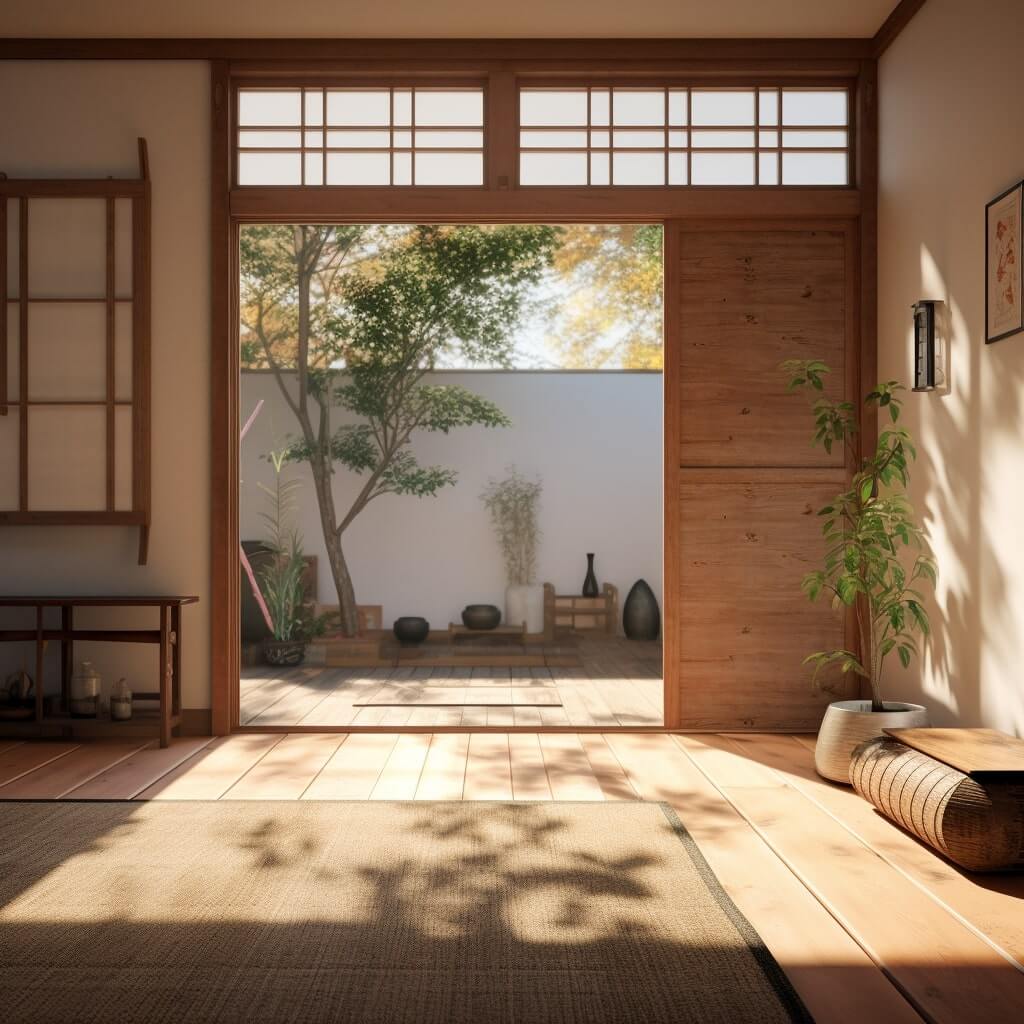
The Importance of Entryways
In my years of exploring interior design, I’ve found that entryways often tend to be the most overlooked part of a Japandi house.
Yet, their importance can’t be overstated.
These transitional spaces not only set the mood for the rest of the home but also serve an essential functional role.
Just imagine – your entryway is your home’s hello and goodbye, its welcoming smile and warm farewell.
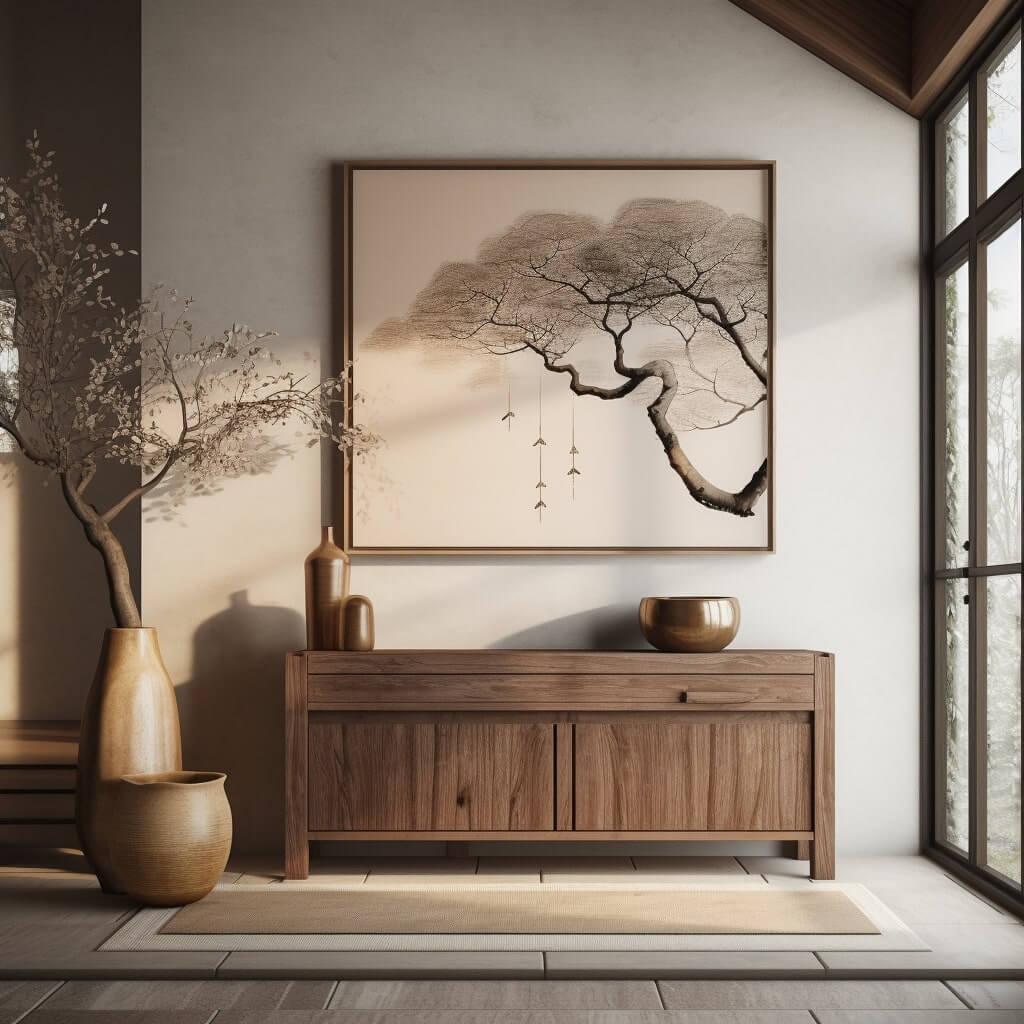
First Impressions Matter
As the first thing visitors see when they enter your home, the entryway shapes their initial impressions.
It offers a glimpse into your world, setting expectations for the design and feel of the rest of your living space.
But it isn’t only about impressing guests; it’s also about creating a space that greets you personally each day, wrapping you in its familiarity and comfort.
My own entryway brings me a sense of calm and order every time I cross the threshold, reassuring me that I am home.
In a Japandi-styled entryway, this first impression becomes an encounter with elegant minimalism and warm functionality, a mix that promises a serene yet cozy living environment.
By designing your entryway in this style, you are sharing not just your aesthetic preferences, but your love for harmony, simplicity, and mindful living.
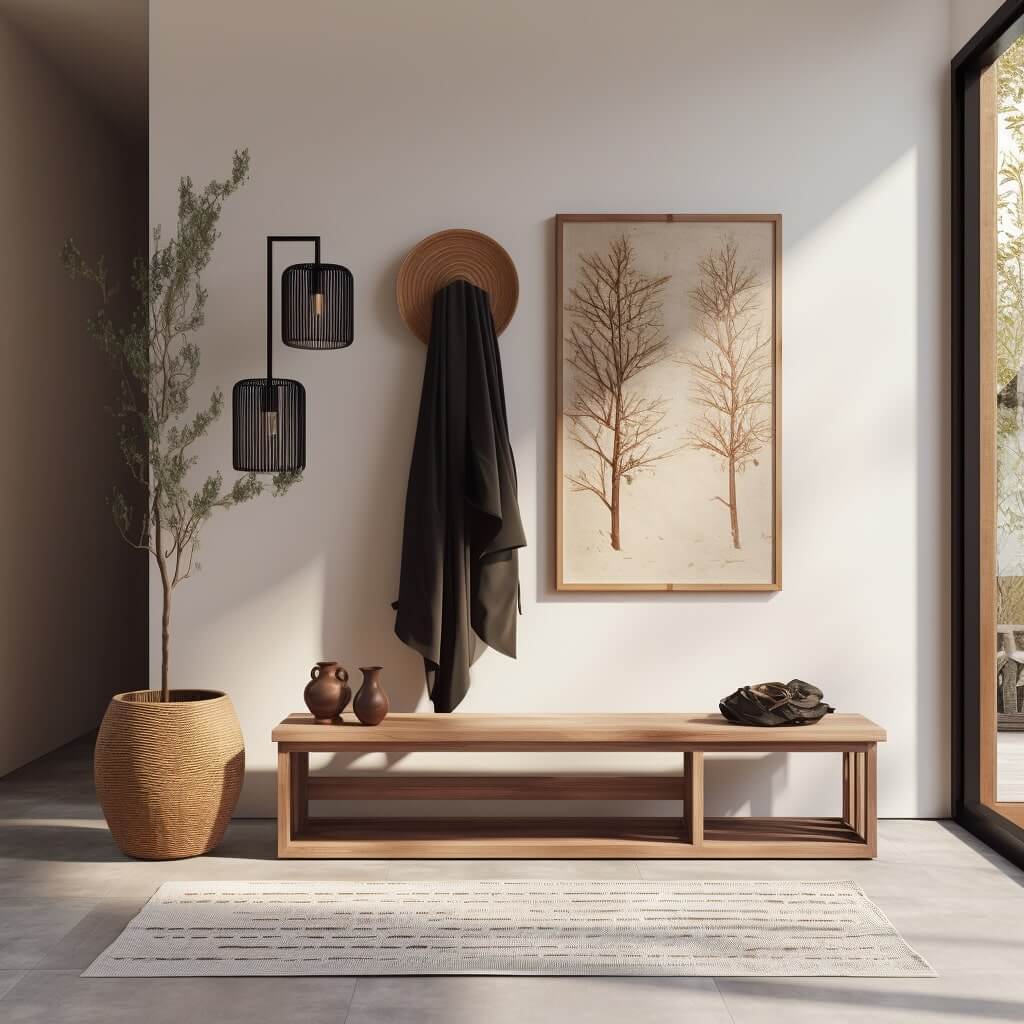
Functionality Meets Design
Beyond making an impression, entryways are also key functional areas.
They are the drop-off points for coats, shoes, keys, and mail, playing a critical role in keeping your home organized.
As someone who appreciates a clutter-free home, I value how my Japandi-style entryway combines this practicality with beautiful design.
In a Japandi entryway, every item, from the bench where you sit to take off your shoes, to the hanger that holds your coat, is chosen with both purpose and aesthetics in mind.
This fusion of function and design isn’t just practical—it’s a daily reminder of the harmony we can achieve in our lives when we focus on what truly matters.
By marrying form with function, a Japandi entryway offers a warm welcome without compromising on order and convenience.
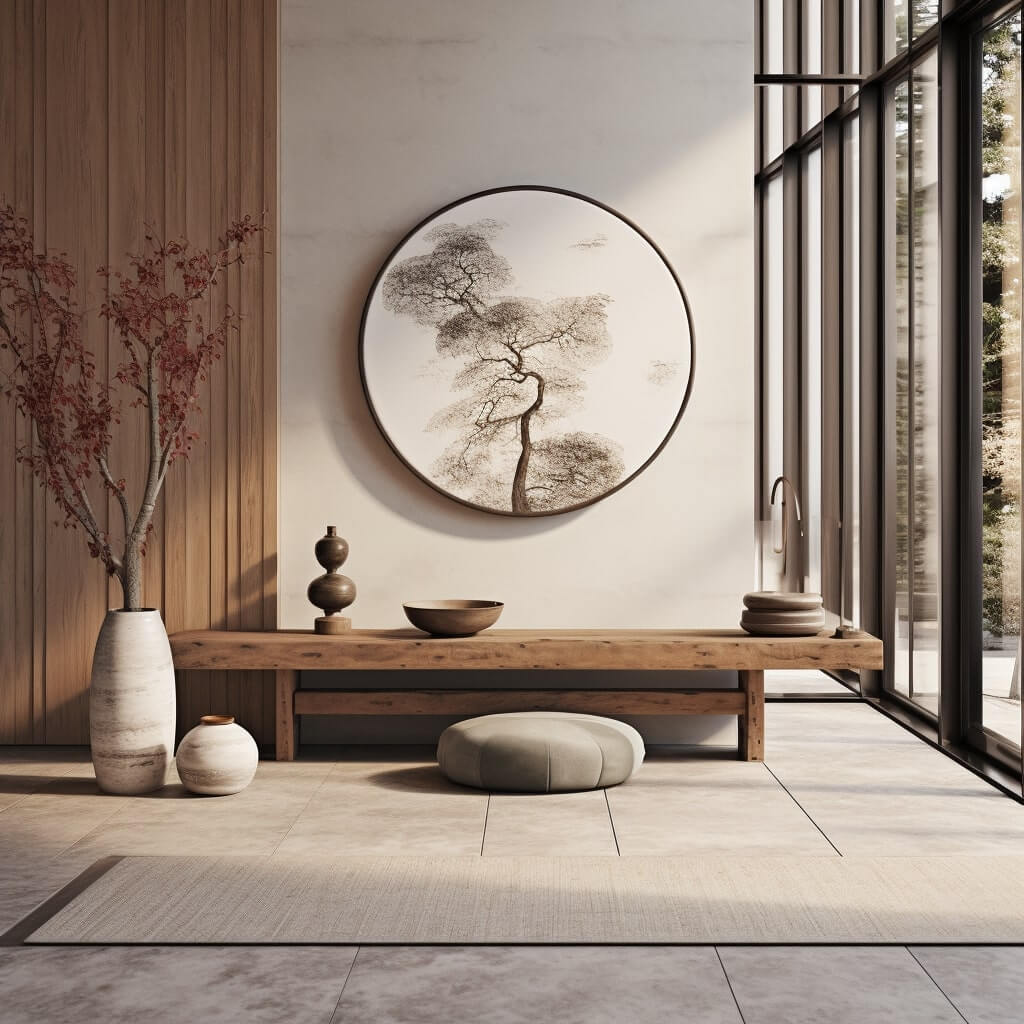
The Japandi Entryway: A Comprehensive Guide
Creating a Japandi-style entryway in your home is a journey filled with the joy of curating a space that blends simplicity, functionality, and a profound appreciation of natural beauty.
Making Use of Space in Japandi Entryway
In Japandi design, every inch of space is used mindfully. The philosophy is simple: less is more.
Having decorated my entryway in Japandi style, I’ve learned to let the room breathe, removing unnecessary items and ensuring that the space feels open and uncluttered.
Simultaneously, I’ve placed importance on functionality, incorporating smart storage solutions and efficient use of space.
Built-in benches with storage beneath, slim console tables, and wall-mounted racks are some of the ways I’ve managed to merge practicality with minimalism.
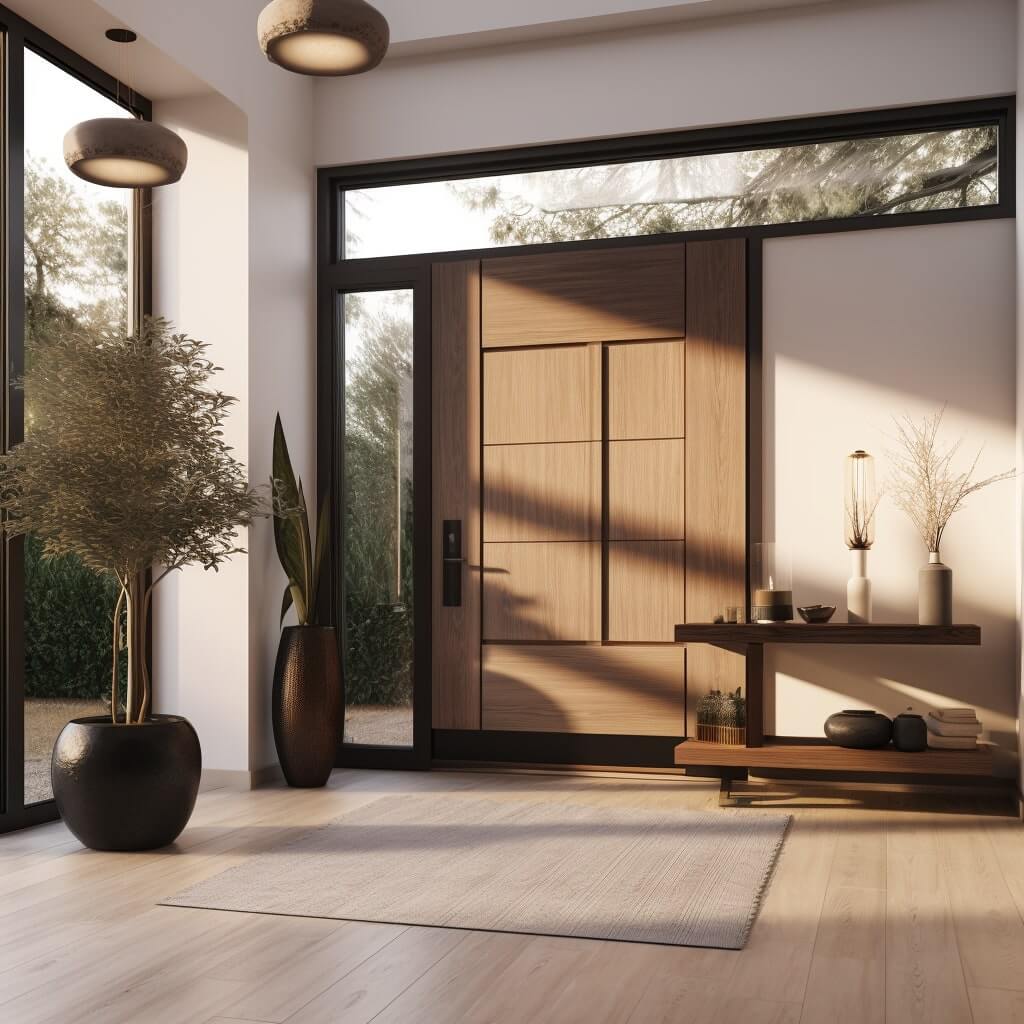
Colors for Your Japandi Entryway
Color plays a critical role in setting the mood of a Japandi entryway.
Rooted in nature, the Japandi color palette leans toward soft neutrals like beige, gray, and off-white, punctuated with muted earth tones.
In my own home, I’ve found these colors to create a soothing, inviting atmosphere while also acting as a perfect backdrop for highlighting unique furniture and decor pieces.
Materials to Use for Japandi Entryway
The materials you choose for your Japandi entryway should be an homage to the natural world.
Woods, particularly in lighter tones, are a staple in my own entryway, setting the tone for a warm, welcoming ambience.
You might also consider incorporating elements of stone, clay, bamboo, or rattan to further emphasize the connection to nature.
Remember, Japandi celebrates the imperfect – handcrafted items or those showing natural grain or texture bring authenticity and character to the space.
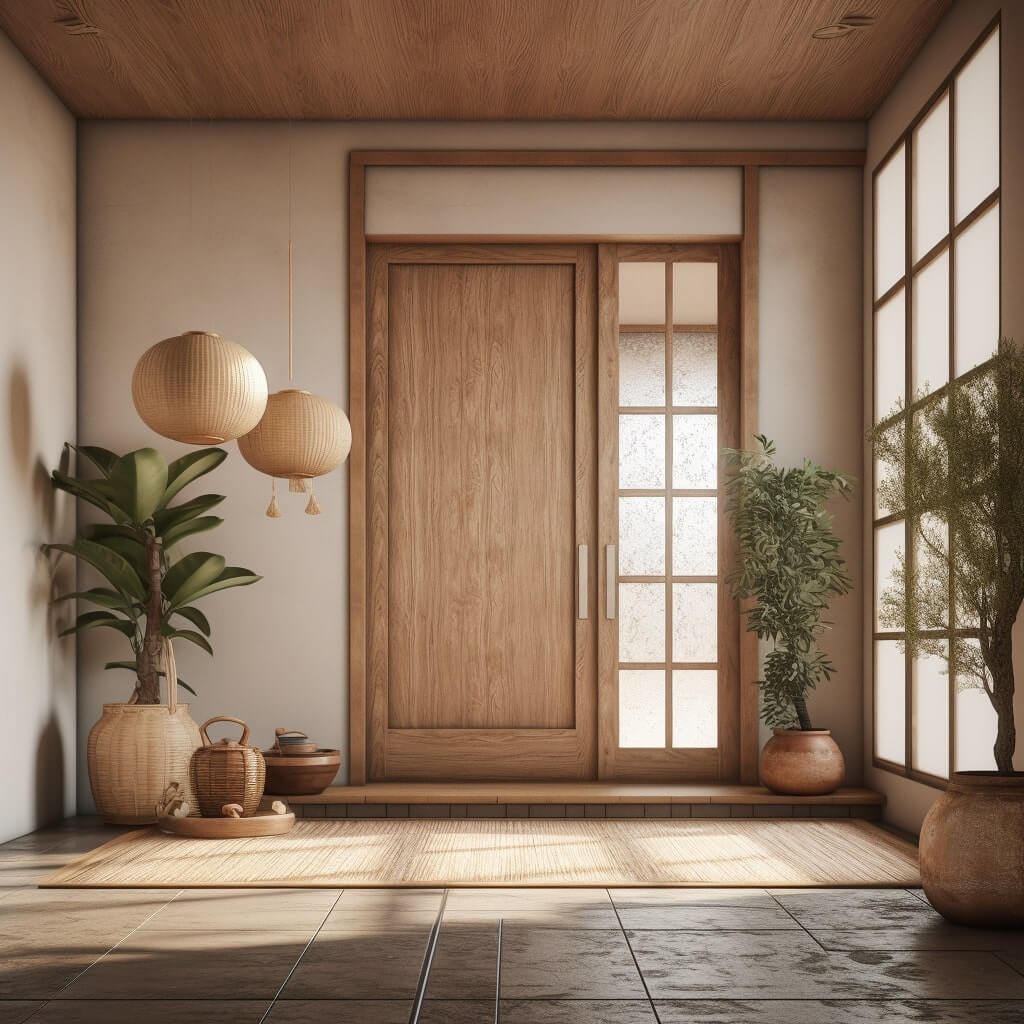
Furniture Choices for Your Japandi Entryway
When it comes to furniture, the Japandi style favors pieces that marry form and function.
In my own entryway, I’ve opted for a minimalistic, wooden Japandi bench that provides a place to sit while removing shoes, and a slimline console table that serves as a drop-off point for keys and mail. A Japandi sideboard is also a key piece for your entryway that creates storage and decor potential at once.
I’ve also added a compact, clean-lined coat rack. Each piece is not only practical but adds to the overall aesthetic, contributing to a space that’s both beautiful and usable.
Lighting in the Japandi Entryway
Lighting is another key element of a Japandi entryway.
The aim is to create a warm, welcoming glow that mimics natural light.
I’ve achieved this with a mix of direct and indirect lighting: a ceiling pendant for general illumination, complemented by softer, ambient light sources like table lamps or wall sconces.
The light fixtures themselves, whether minimalist in design or handmade, contribute to the overall aesthetic.
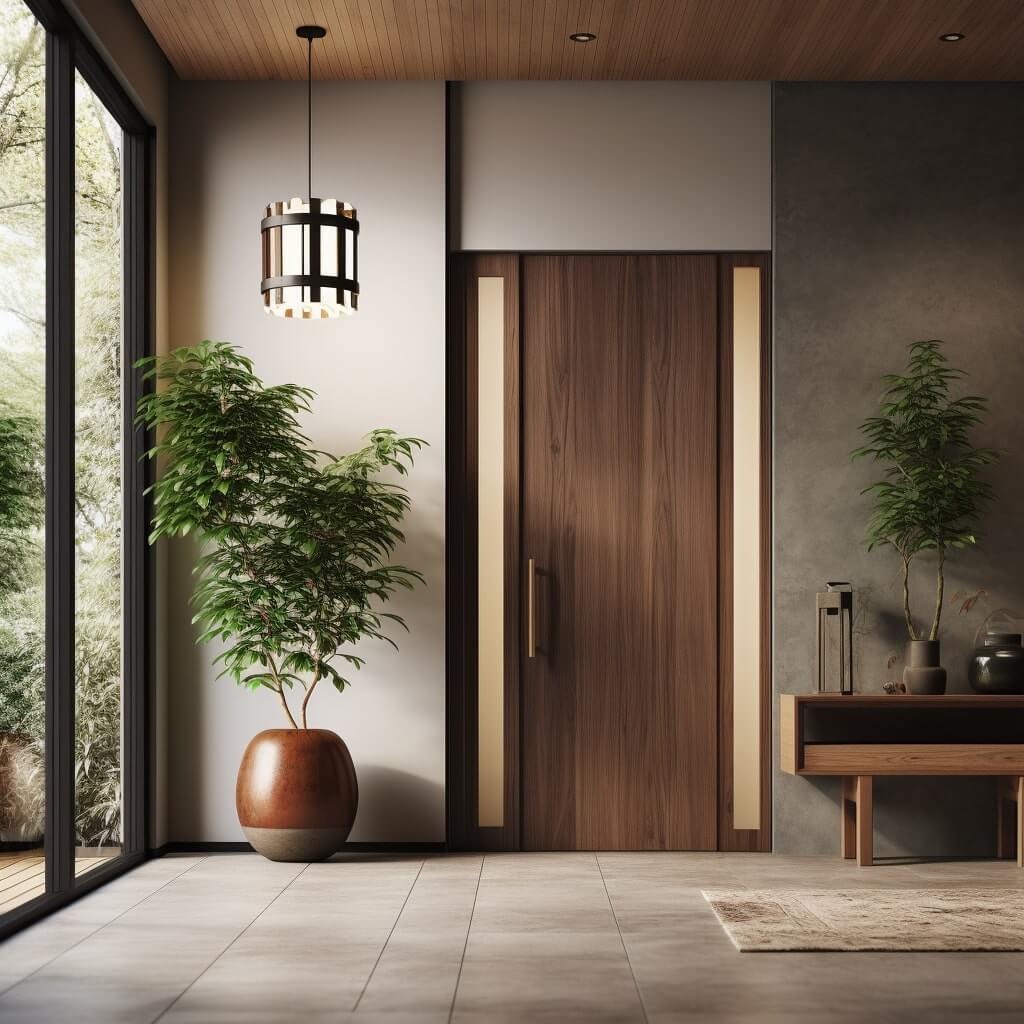
Artwork and Decor for Your Japandi Entryway
Artwork and decor in a Japandi entryway should reflect the philosophy of mindful simplicity.
I’ve selected a few key pieces – perhaps a piece of abstract art, a handcrafted vase, or a sculptural object – that express my personal taste without cluttering the space.
Remember, in Japandi, each piece should hold its own significance, whether that’s functional, aesthetic, or ideally, both.
As in Japanese tradition, plants are also an integral part of the decor, lending a sense of freshness and connection to nature.
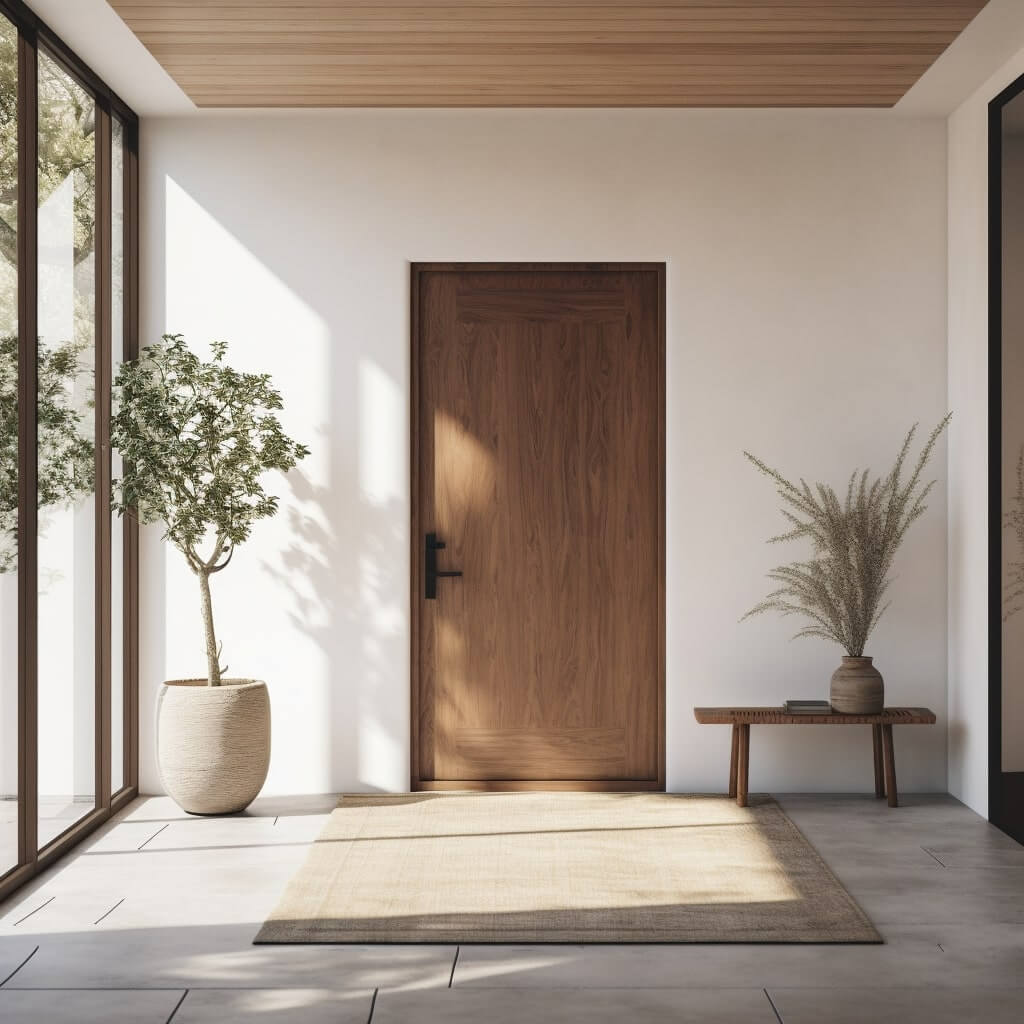
Practical Tips to Achieve Japandi Entryway Design
Creating a Japandi entryway doesn’t have to be an overwhelming task.
Over the years, I’ve discovered some practical tips that have helped me transform my own entryway while staying true to this hybrid aesthetic.
Here, I’ll share these insights with you to guide you on your own Japandi journey.
Mixing Old and New Elements
Japandi design has taught me to celebrate the old along with the new, echoing the wabi-sabi tradition that sees beauty in the imperfect and transient.
In my entryway, I’ve mixed contemporary pieces with vintage or antique finds, creating a rich tapestry of textures and stories.
A new, sleek-lined bench could be paired with an antique mirror, or a modern coat rack might sit next to a vintage shoe cabinet.
Each piece, whether new or old, brings something unique to the space, contributing to the depth and character that is so intrinsic to the Japandi style.
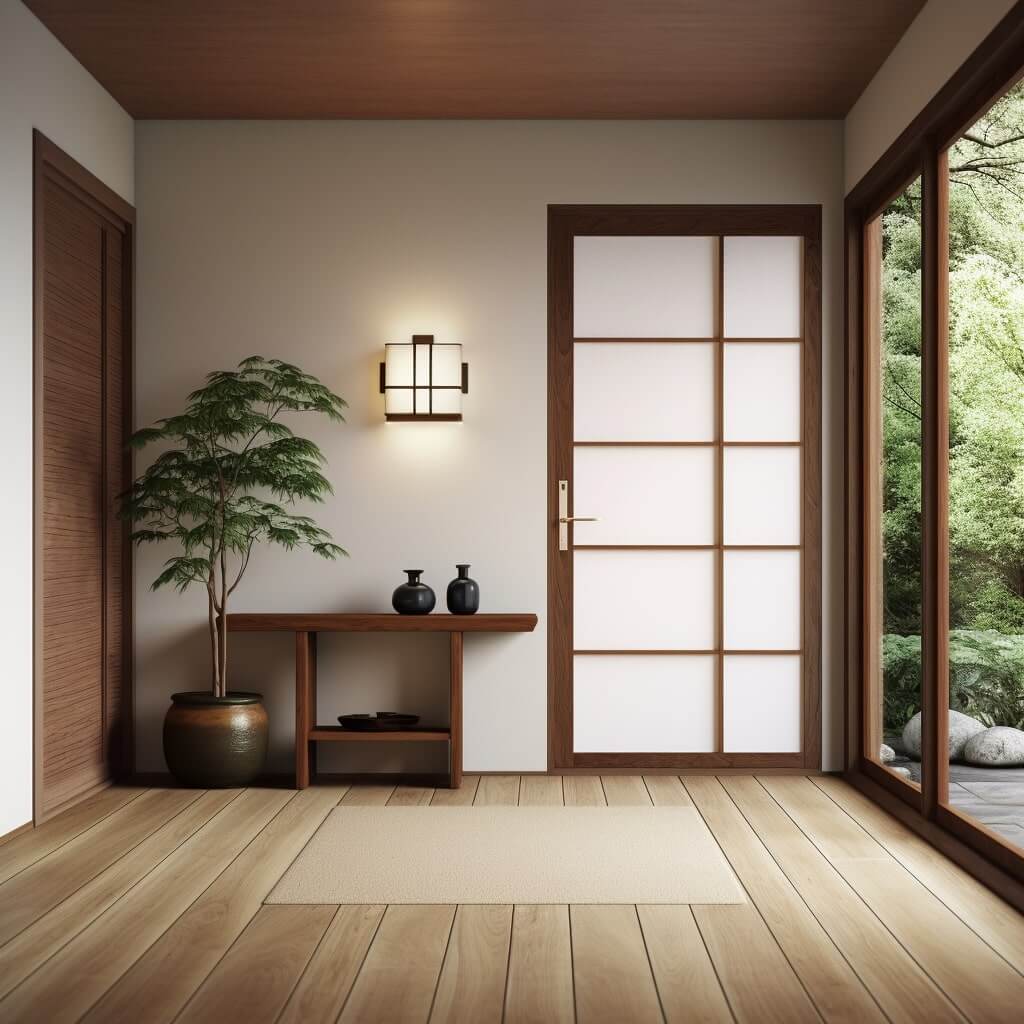
Incorporating Natural Elements
Nature plays a pivotal role in Japandi design, so I’ve made it a point to incorporate natural elements in my entryway.
From furniture and decor made of natural materials like wood, bamboo, and stone, to plants that add a breath of fresh air, the influence of the natural world is evident.
But remember, in the spirit of Japandi, the use of natural elements should be purposeful, not overwhelming.
A strategically placed potted plant, a stone bowl for holding keys, or a jute rug can introduce a subtle yet impactful touch of nature.
Balancing Functionality and Aesthetics
One of the greatest lessons I’ve learned from Japandi design is that functionality and aesthetics aren’t mutually exclusive – in fact, they can and should coexist.
This principle is especially valuable when designing an entryway, a space that needs to be as practical as it is beautiful.
Ensure your entryway serves its functional purpose effectively, providing ample storage and necessary features like coat racks, shoe benches, or key holders.
Simultaneously, these functional pieces should contribute to the room’s aesthetic appeal.
For instance, I’ve opted for a bench with a sleek, minimalist design, and a coat rack that, while practical, also adds to the room’s visual interest.
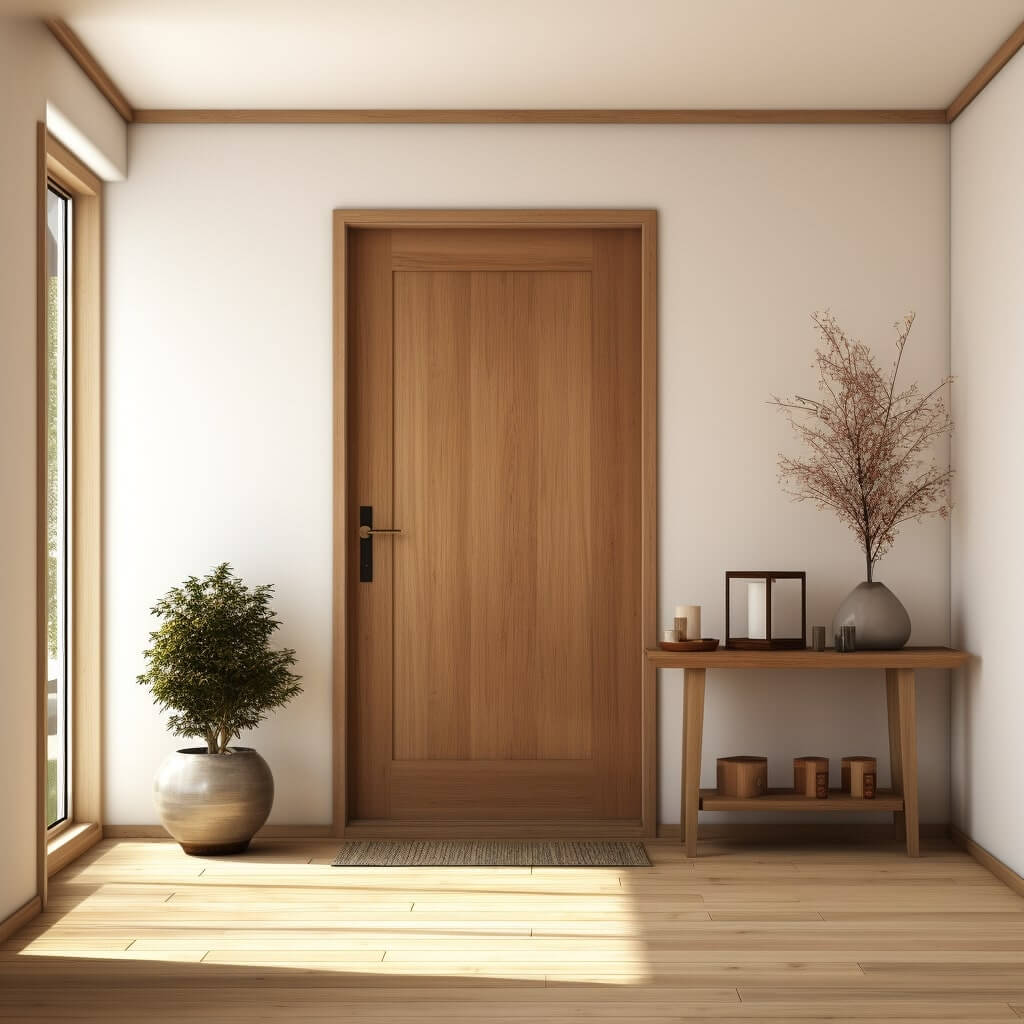
FAQs
What are the rules of Japandi style?
Japandi style emphasizes simplicity, functionality, and natural elements. It employs a neutral color palette, quality craftsmanship, and a mindful blend of Japanese minimalism with Scandinavian comfort.
What is the difference between Scandi and Japandi?
While both Scandi and Japandi styles prioritize minimalism and functionality, Japandi merges this with Japanese principles of simplicity and the concept of wabi-sabi, celebrating imperfections in nature and craftsmanship.
How to make a Japandi style home?
To create a Japandi style home, incorporate neutral colors, natural materials, and minimalist furniture. Balance functionality with aesthetics, mix old and new elements, and respect open spaces.
What is the difference between Japandi and Muji?
While both Japandi and Muji celebrate minimalism, Japandi combines Japanese and Scandinavian aesthetics. Muji, on the other hand, is a Japanese brand known for its own unique “no-brand” quality and simplicity.
What are the 3 types of entryways?
Three common types of entryways are the foyer, mudroom, and vestibule. Foyers are formal entryways, mudrooms serve as transitional spaces especially in cold climates, and vestibules are small rooms between the exterior and interior doors.
What makes a good entryway?
A good entryway is welcoming, organized, and functional. It balances aesthetics with practical elements like storage and seating. It sets the tone for the rest of the house and reflects the homeowner’s personal style.
What do you need for an entryway?
Essential items for an entryway include a console table or bench for storage, coat hooks or a coat rack, a mirror, a place for shoes, and good lighting. Decor items like artwork or plants can add personality.
What makes an entryway inviting?
An inviting entryway is clean, clutter-free, and well-lit. It includes welcoming elements such as comfortable seating, appealing decor, and warm, neutral colors. Personal touches like artwork or a welcome mat can also add charm.
How do you organize an entryway?
Organize an entryway by having designated spaces for coats, shoes, keys, and mail. Use furniture with built-in storage, baskets, hooks, and shelves to keep items tidy. Keep decor minimal to avoid clutter.







